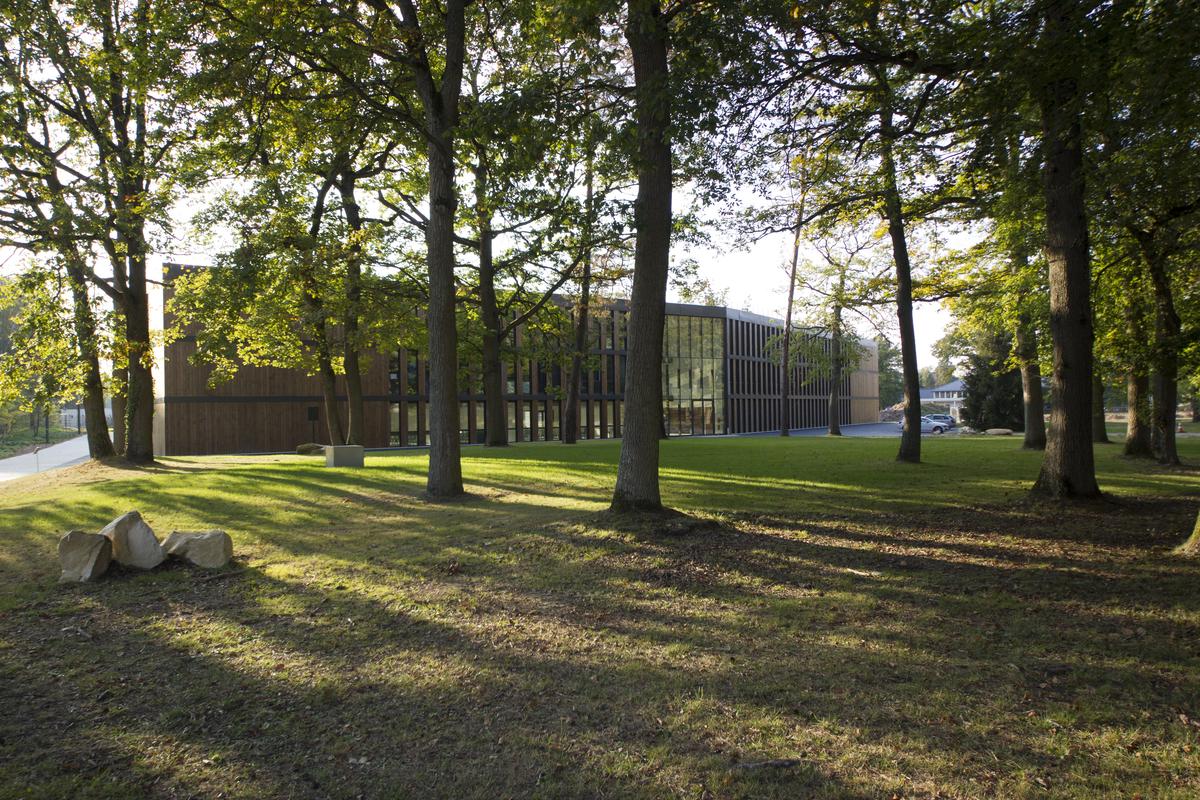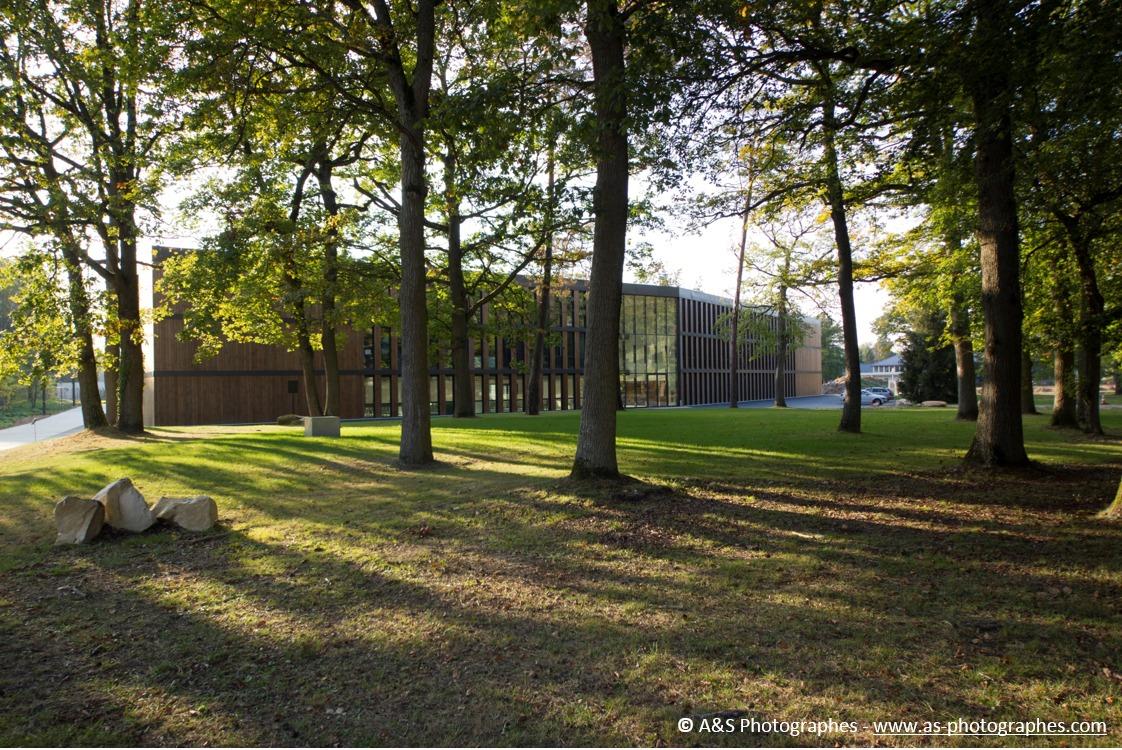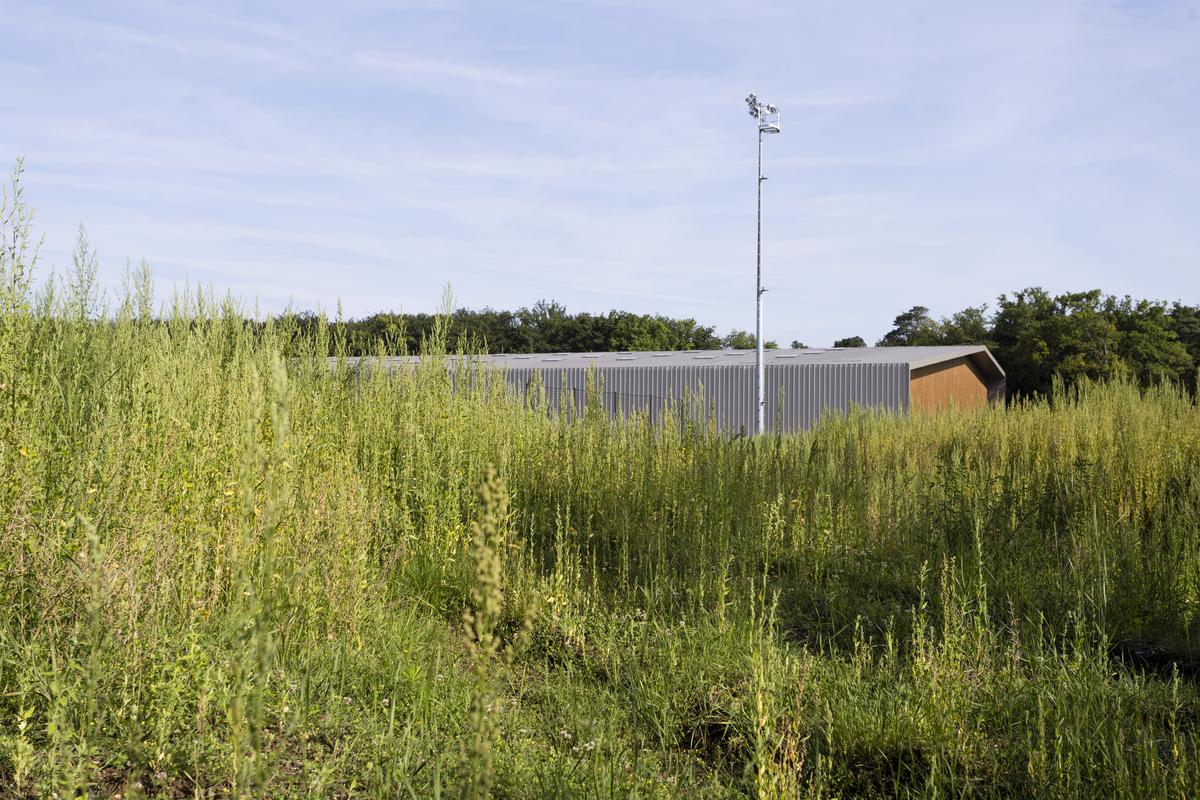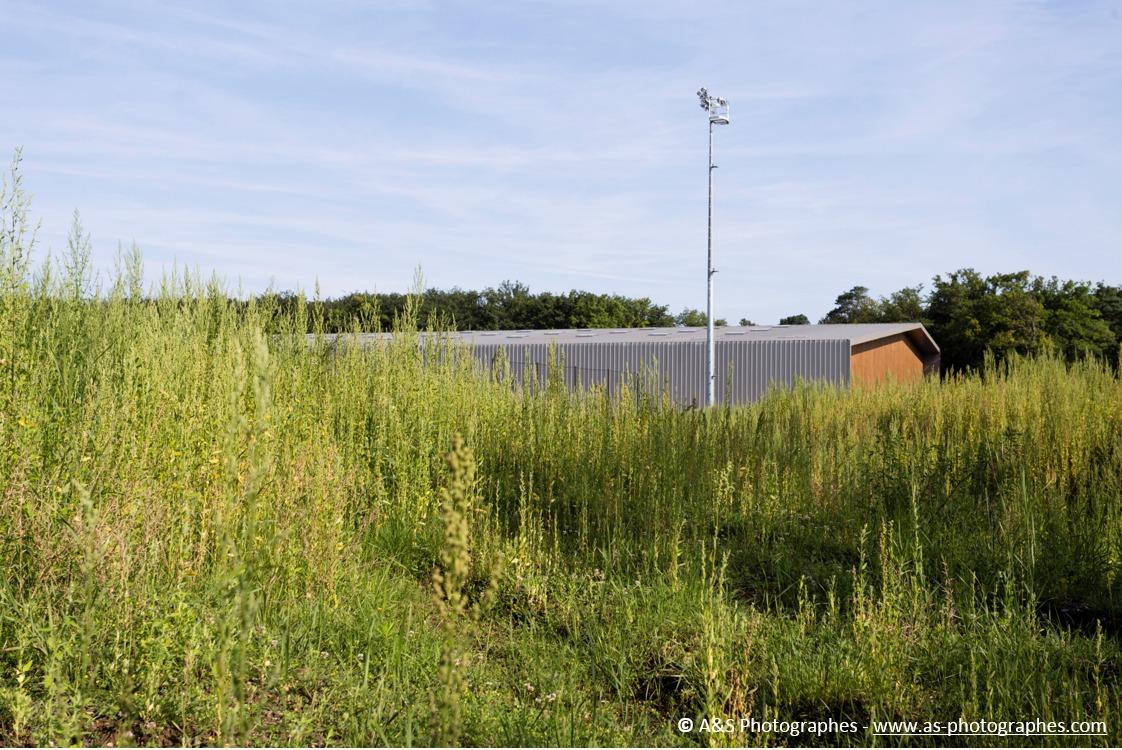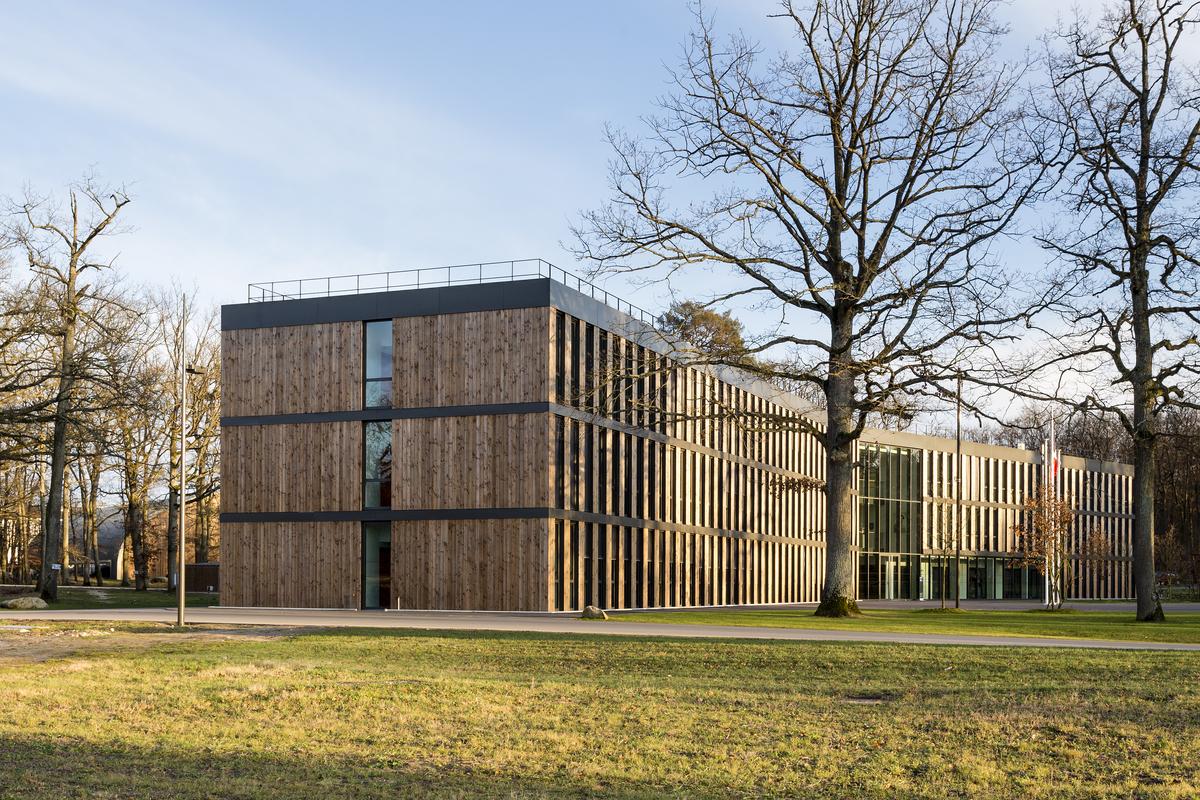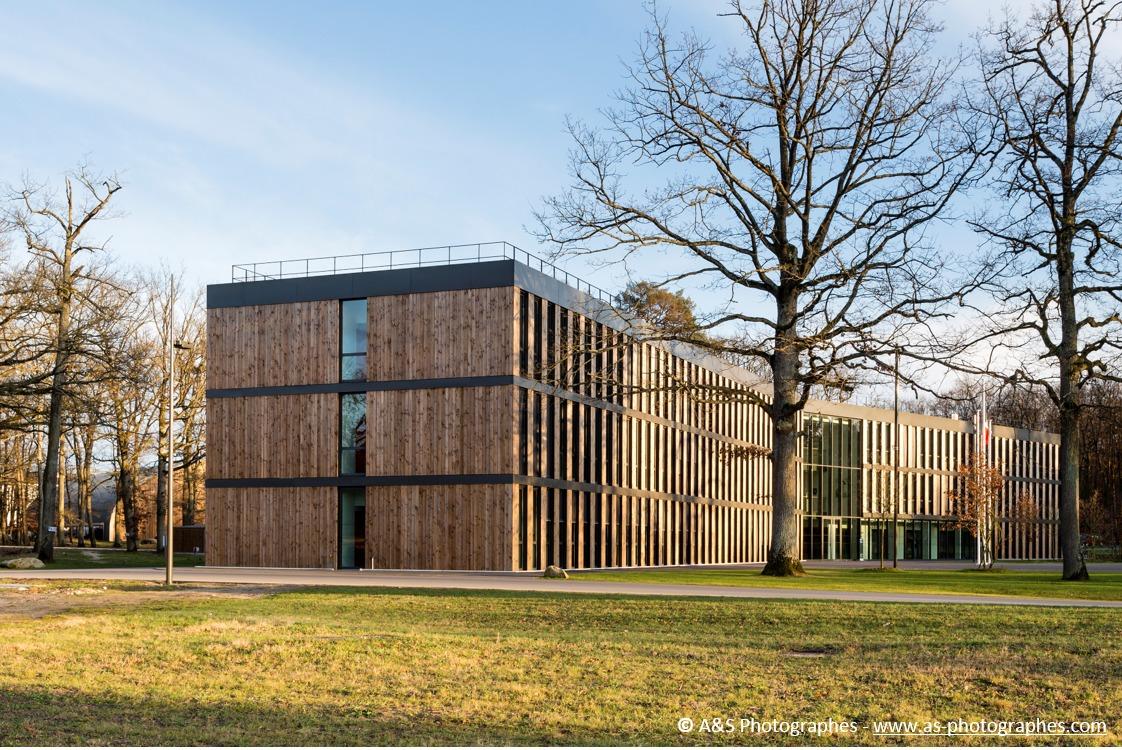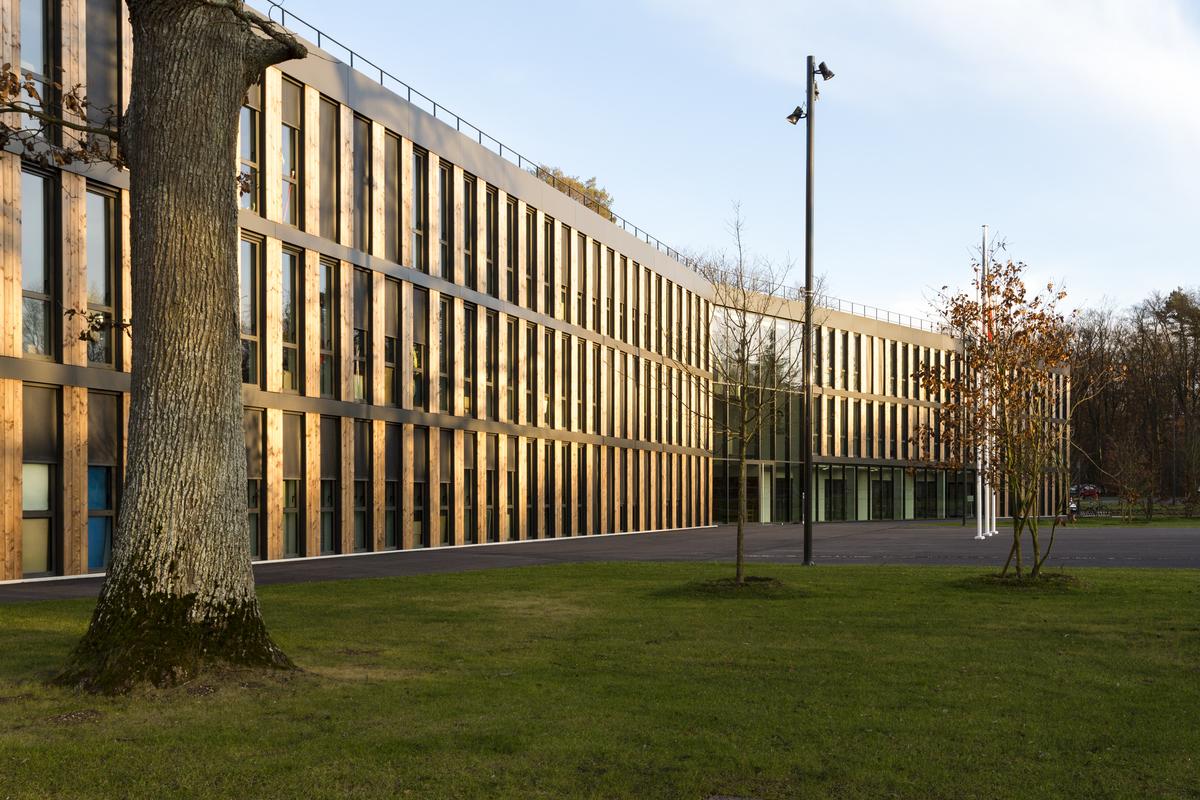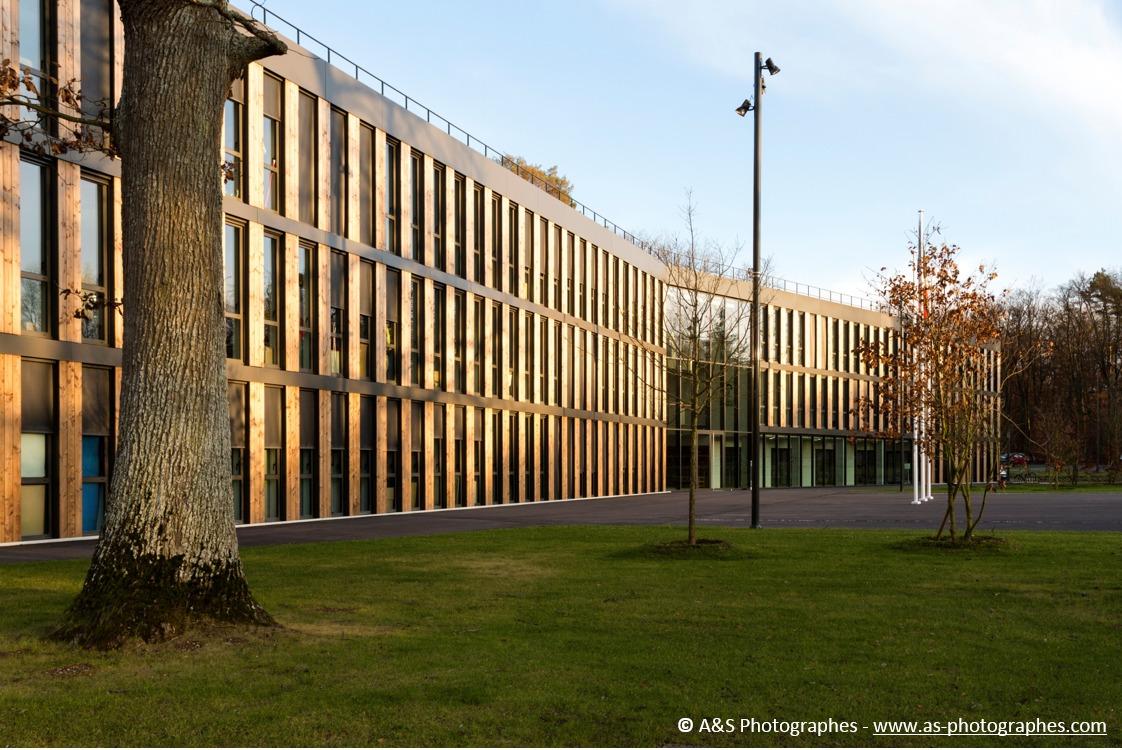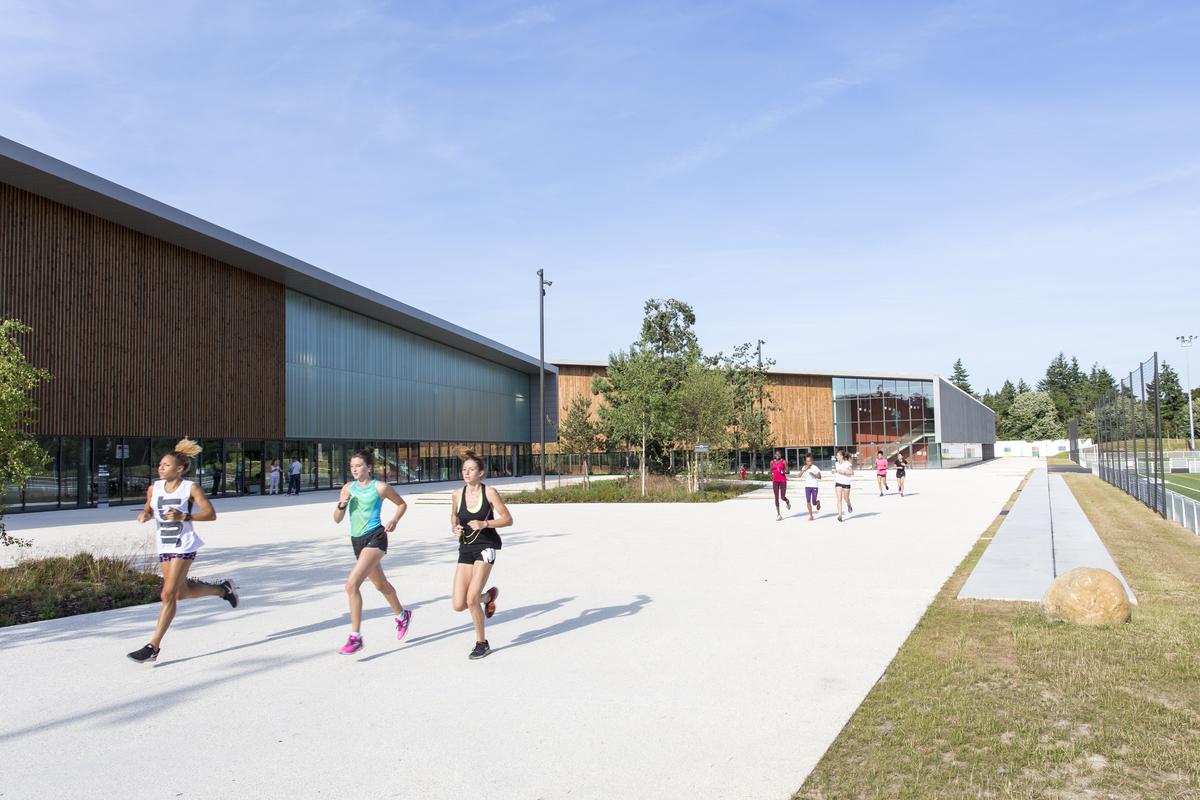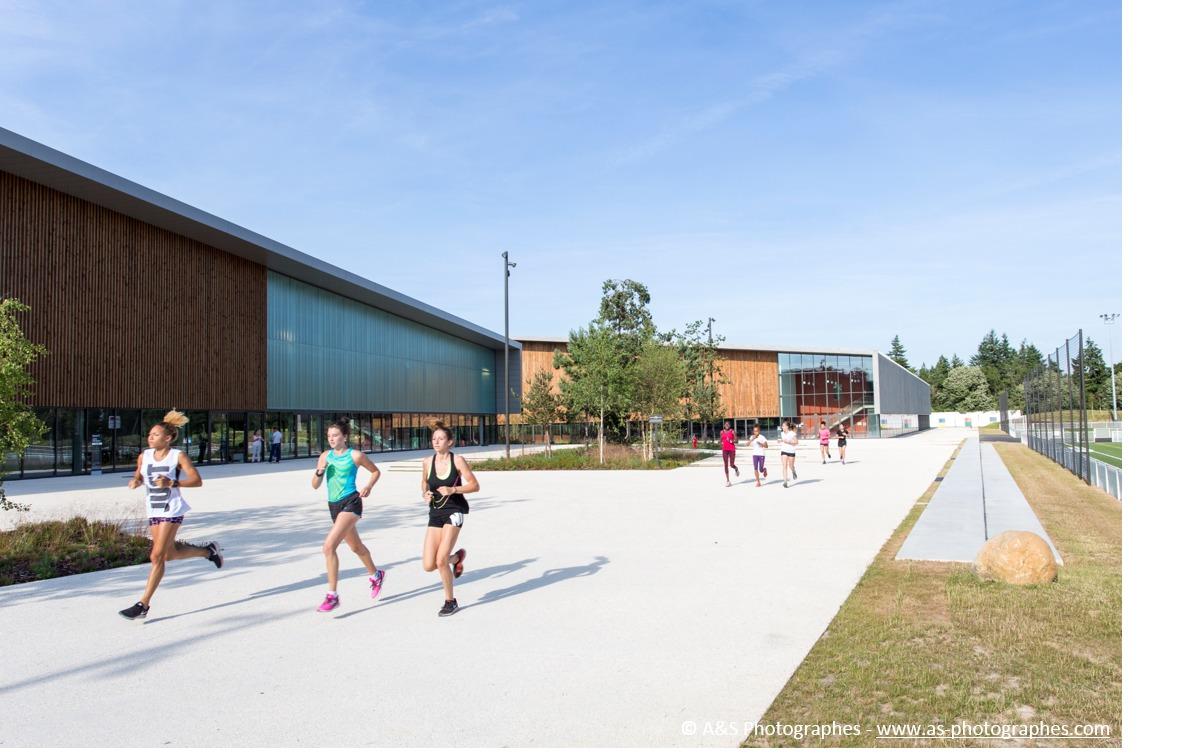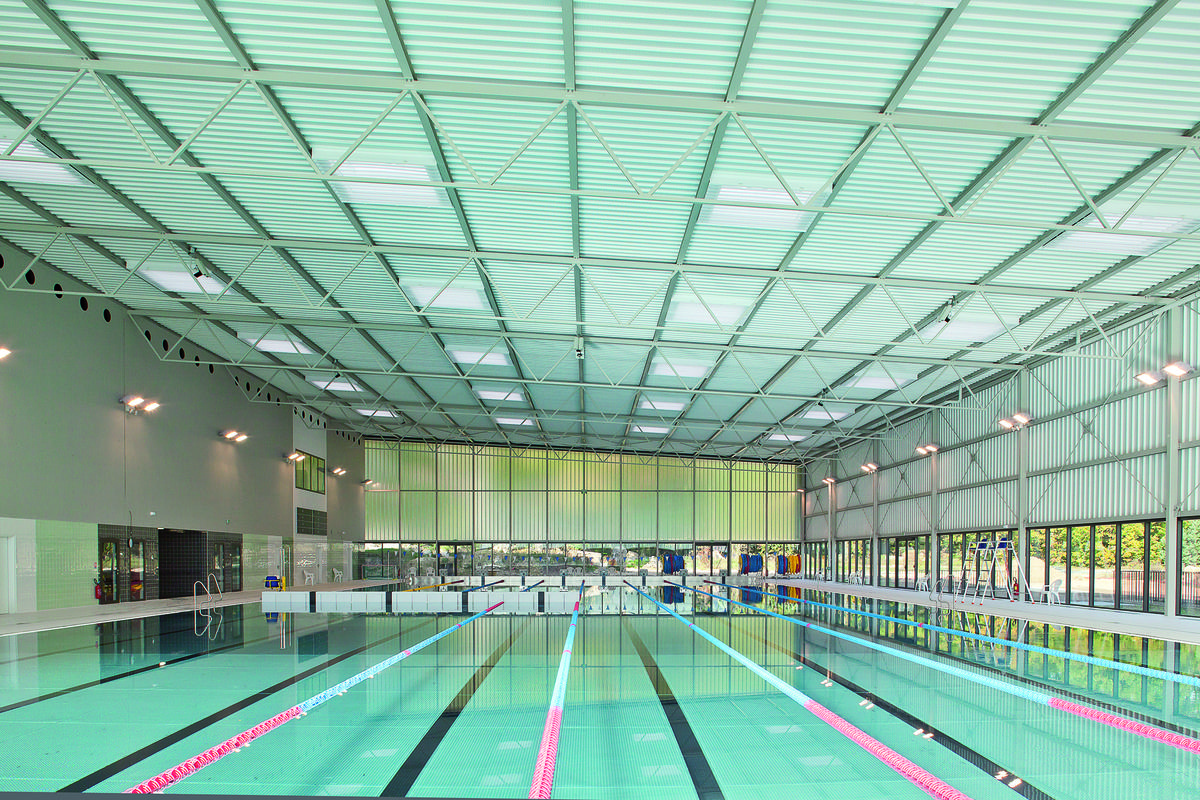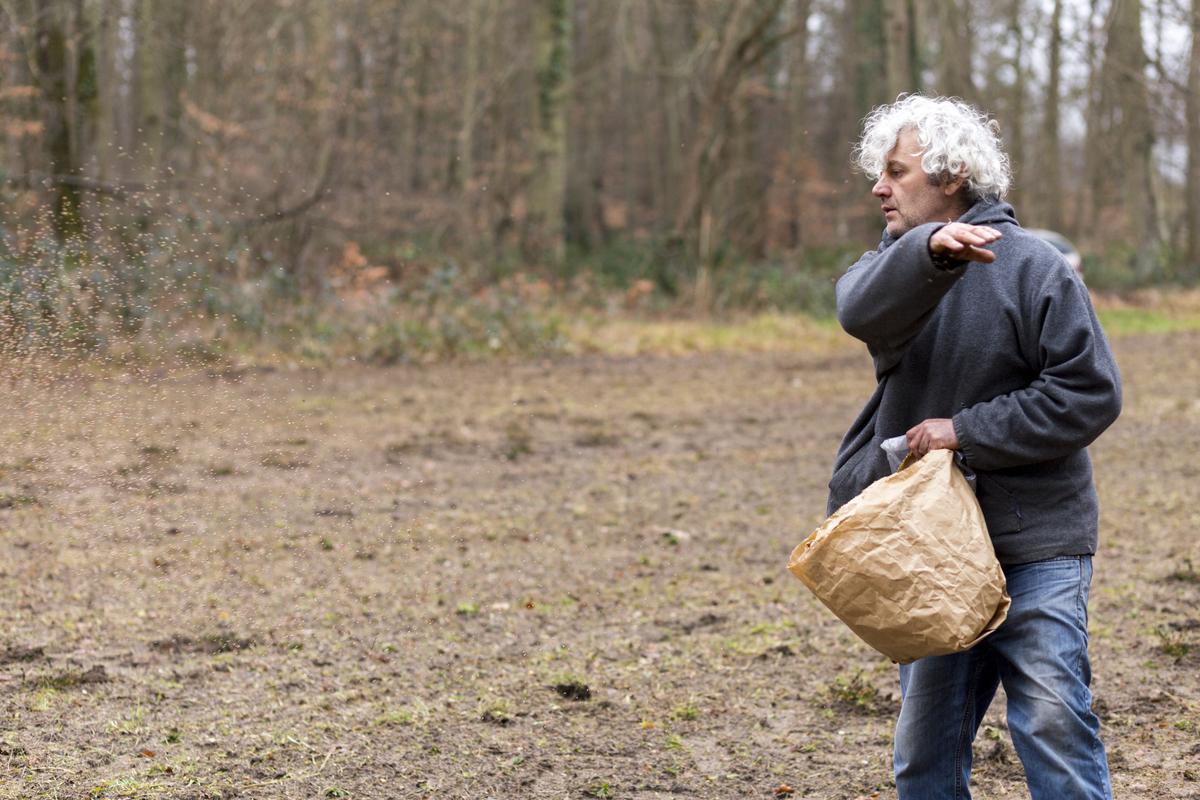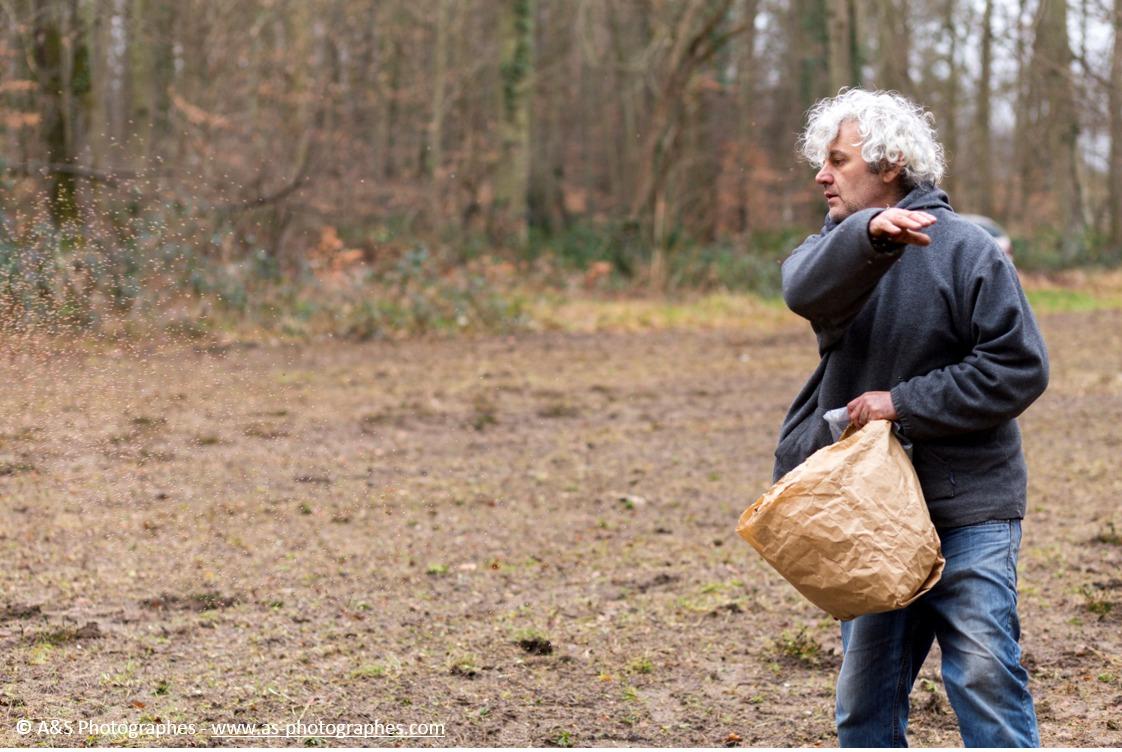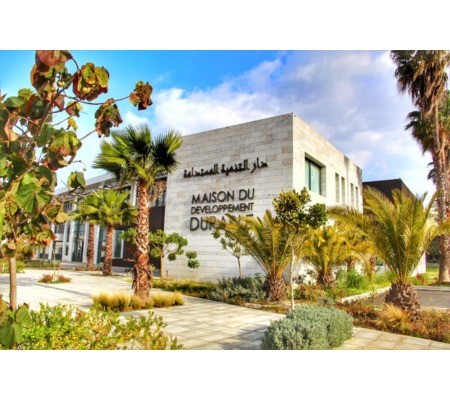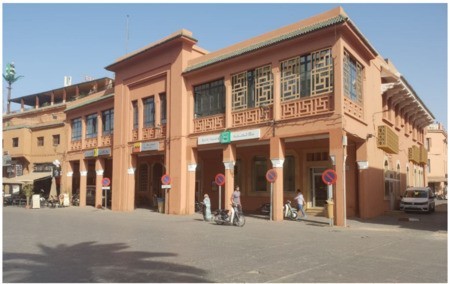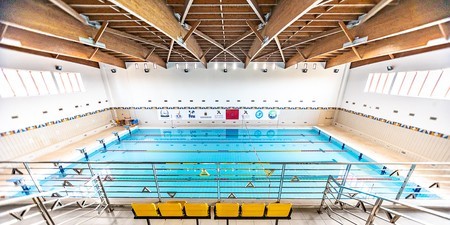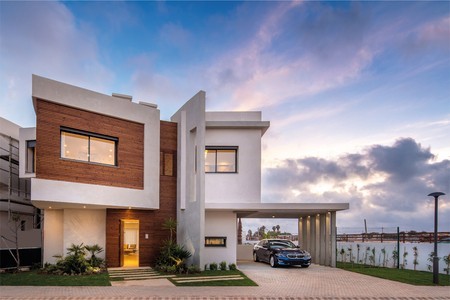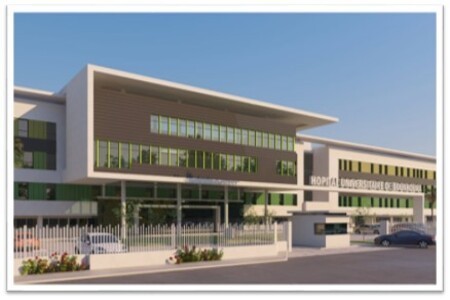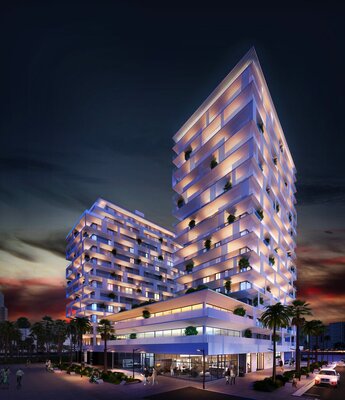The National Sports Center of the Ministry of Defense
Last modified by the author on 14/06/2018 - 14:38
Urban renewal
-
50 ha -
68 000 000 €
The National Sports Center of the Ministry of Defense at the heart of the exceptional site of the forest of Fontainebleau has been renovated and extended by ADIM Paris Ile-de-France, under a public-private partnership contract (PPP). ), for a period of 30 years on behalf of the Ministry of Defense. The guiding principle of this project was its thoughtful insertion into the surrounding site of the Fontainebleau forest in order to give it a strong identity that respects local biodiversity.
The particularities of this project of renewal of buildings and conservation of the environmental heritage are as follows:
- Insertion of premises in the unique and exceptional environment of the forest of Fontainebleau in the constant respect of biodiversity and the site through a study convention with the National Museum of Natural History
- Development of the site in the spirit of a large clearing with facilities and living spaces concentrated in the heart and a minimum of built spaces. The project displays the strong desire to build a reference point in terms of environmental and landscape quality
- Providing the Ministry of Defense with a complete package of services including management of green spaces
- Assumption of responsibility for the opening of the site to the public in a pleasant and green setting outside the slots reserved for the military
Cost of construction: CPI of 68 M € and cost of green space 981 K €
Given the unique site that hosts the project, the sustainable development approach does not represent a major part of the financial investment but above all a permanent involvement and adaptation in synergy with all stakeholders.
Description: 6 accommodation buildings - 2 sports halls - 1 office building - 1 reception pavilion - 1 climbing wall - 3 accommodation buildings and 2 housing buildings
Certifications: HQE® (Offices), PEQA (sports areas), PH & E (certification for accommodation and approach for housing)
Labels: BBC EnergieNeuf (tertiary buildings), THPE (sports equipment) and BBCRénovation (housing)
Programme
- Housing
- Offices
- Public facilities and infrastructure
- Public spaces
- Green spaces
Project progress
- Operational phase
Prescriptions and zoning
- Natural protection area
Key points
- Governance
- Quality of life
- Mobility
- Biodiversity
- Energy /Climate
Approaches used
- Others
Certifications
- Autre
Data reliability
3rd part certified
Type of territory
The CNSD site has 50 hectares located in the heart of the forest of Fontainebleau. The Fontainebleau massif, emblematic site in many ways, has joined the European network of Natura 2000 sites because it is home to a particularly rich and diverse fauna and flora, to the point that some scientists consider the forest as the richest in Europe. West. It is home to Europe's richest arthropod fauna (3,300 species of beetles, 1,200 Lepidoptera) and about 60 protected plant species.
Located 60 km south of Paris, 40 minutes by train from Gare de Lyon and 1 hour by car from Porte d'Orleans, this renowned tourist region is a major asset for the organization of any sporting event .
Land area: 50 hectares
Constructed floor area: 40,000 m² or only 7% of the land
Climate zone
[Cfb] Marine Mild Winter, warm summer, no dry season.
More info
http://www.adim.fr/france/adim/minisites.nsf/975F540AA2A966CBC1257BDC00774968/$FILE/FICHE%20REFERENCE%20ADIM%20PIDF.pdfNumber of residential units
395
Project holder
Project management
Project stakeholders
ADIM Paris Ile de France
Investor
Adim Paris Ile de France is in charge of the renovation and extension of the site as part of a 30-year Public-Private Partnership (PPP) contract on behalf of the Ministry of Defense.
http://www.adim.fr/france/adim/adim.nsf/web/adim_paris_ile-de-france_adim_pidf_-_pole_projets_complexes.htm&ent=entreprise_adim_paris_ile-de-france.htm&noprehome=1&niveau1=A23C05E8E8785130C125808F004D2855
Barthélémy-Griño Architects
Architecture agency
http://barthelemygrinoarchitectes.eu/
National Museum of Natural History
Other
Biodiversity expert; Agreement signed with ADIM Paris Ile de France
GTM Buildings
Construction manager
General Construction Company
https://www.vinci-construction.fr
D'ici là paysage
Operator
Landscaper
http://www.d-ici-la.com/
SOLUTIONS
Quality of life / density
Integration of buildings in the site and the forest landscape:
The height of the trees conditioned the architectural writing and the design of the buildings by limiting their height so that they do not emerge from the forest. The architects also cleared the campus to reduce the footprint of the building and develop landscaped land reserves to find a clear atmosphere and a forest heart atmosphere.Only a small proportion of the site has been built and the boundaries between activities have been redesigned. The site offers beautiful clearings on the edges of the adjacent forest and undergrowth areas, planted mainly with species typical of the forest, have been developed. The wooded areas have been densified, new groves created, and planted valleys are used to store runoff water and create tree masses. The living spaces were also embellished with tall trees.
Less than 3% of existing trees on site were felled and 500 new trees were planted.
Preservation of existing biodiversity and respect of the life cycle of the different species:
Throughout the construction phase, local biodiversity impact studies were conducted and the work was phased according to the life cycles of the species present. Thus, during the demolitions, the life cycle of animals present in the undergrowth (nesting period) was scrupulously respected and the buildings were demolished only over the period possible without nuisance from August to September. Areas of green space with differentiated management have also been created. These "high meadows" have a landscape quality and reduce the number of mowing to enhance the natural appearance. Planted species have notably been used to control invasive plants present on site. Finally, equipment such as outdoor lighting was completely changed to avoid light pollution and to direct the flow only towards pedestrian paths.
Net density
Culture and heritage
ADIM Paris Ile-de-France has proposed a real strategy of respect for the site via a convention of study with the National Museum of Natural History. The Museum's expertise has been used in the dynamics of preserving local fauna, surrounding flora and the development of a sustainable life throughout the project.
Social diversity
The accommodation areas fall into three broad categories: double or single rooms for trainees and short stays, independent studios for executives and a building similar to a hotel 2 ** for VIP trainees and the generation of ancillary revenue during periods of poor training.
Ambient air quality and health
Natural ventilation of privileged buildings; VOC low-emissivity materials (systematic A + labeling for interior coatings), chemical agents (CMR)
Acoustic comfort (strategic location of car parks and technical equipment); visual comfort (site with high density of green spaces, optimal natural lighting of premises)
Circular economy
Recycling of the products resulting from the demolition:
The original site had a number of dilapidated and unused buildings that were demolished. The demolition waste was then crushed directly on the site and then reused within the VRD lot, especially for roads and filter nets.
Mobility strategy
Management of soft movements, pathways, access and parking
The location of the car parks at the level of the buildings made it possible to facilitate the soft movements, on foot or by bicycle, which were materialized by a clear path. The presence of a pedestrian mall delimiting the central part of the site also contributed to the reduction of on-site vehicle movements.
SOLUTIONS
- Soft transportation
- Parking management
Water management
Integrated and landscaped rainwater treatment systems: Natural valleys were created to recover the rainwater and thus reform the water table under the site. This allows the site to be fed with drinking water. The planned sanitation system is of the separative type: a rainwater network for outdoor and roof spaces, and a wastewater network. The recovery tank located on the roof allows the cleaning of roads or the watering of green spaces. The waterproof surfaces have been optimized and robust plants requiring little watering have also been put in place.
Soil management
Planted species have notably been used to control invasive plants present on site. Typical species of the forest of Fontainebleau mainly have been planted and robust plants requiring little watering have also been set up.
Waste management
Recycling of demolition products via specialized subsidiaries in the construction phase: To limit the impact of the operation on the environment, the demolition products were recovered by re-use and recycling on site for the realization of the VRDs. In this way, site waste was crushed into recycled concrete and used especially for roads.
Biodiversity and natural areas
The site of the forest of Fontainebleau, where ADIM Paris Ile-de-France proposed a real strategy of respect of the site via a convention of study with the National Museum of Natural History, is classified Natura 2000. The expertise of the Museum has been used in the dynamics of preservation of local fauna species, surrounding flora and the development of a sustainable life.
Faced with the unique and fragile ecosystem of the Fontainebleau forest, the actors were able to carry out a sustainable development policy from the design stage, and at all levels, minimizing the impact of the operation and promoting respect and respect. insertion of the surrounding biodiversity into the development project.
On the other hand, each development carried out was designed with the aim of enhancing the surrounding site. The project focused on the protection and conservation of existing flora and fauna, soil protection, rainwater management on the plot, recycling of materials and the rational use of available space. on the site.
Biodiversity included in the building construction reflection:
Choice of reflected equipment (lighting, pipeline deviation, low construction impact on biodiversity, etc.); decrease in footprint areas
Management of spaces and integration in the site:
Differentiated management of green spaces; respect for the surrounding site; early renewal of the forest; adaptation of the site to the life cycles and habits of the species present
SOLUTIONS
- Management of natural areas

Differentiated management of green spaces
Two types of grasslands decorate the campus.
The "meadow grasslands" accompany main roads and pedestrian paths. It is a maintained space that can be wooded and shorn twice a month. They offer breakthroughs to buildings and wooded edges. Under the wooded masses, users of the site have the feeling of making their way "through the woods".
The "high meadows" have a natural landscape quality. A "differentiated" type of management reduces the number of clippings and reinforces the natural state.
Climate adaptation, resources conservation, GHG emissions
Energy performance of the envelope:
Building benefiting from a centralized management of energy with a maximized use of the natural contributions in light and ventilation: High-performance envelope that enhances solar energy intake in winter and avoids overheating in the summer.
- ADMINISTRATION:
Primary energy consumption: 50 kWhEp / m².an
Low GHG emissions: 4 kgeqCO2 / m².an
- ACCOMMODATION:
Primary energy consumption: 79 kWhEp / m².an
Low GHG emissions: 14 kgeqCO2 / m².an
- SWIMMING POOL :
Primary energy consumption: 111 kWhEp / m².an
Low GHG emissions: 9 kgeqCO2 / m².year
- ATHLETICS :
Primary energy consumption: 102 kWhEp / m².an
Low GHG emissions: 14 kgeqCO2 / m².an
Energy sobriety
- Heating:
Using a heat pump in the pool area to manage dehumidification and heat recovery Digital regulation of the heating circuit according to the outside temperature for housing
- ECS:
Heat network in the locker room Radiant panels in the hall of athletics
- Ventilation :
Natural ventilation in halls with facade and double skin cover Double-flow with wheeled exchanger with a yield greater than 80% Canadian well in the lobby for significant savings in terms of heating, cooling and ventilation needs respectful of the environment and its inhabitants
- Refreshment:
No climate system
Buildings
Particular attention is paid to the types of materials used in buildings.
Use of bio-based materials:
The wood used in frontage is durable and perennial. Local species are favored in the case where the local resource is not adapted or non-existent, wood from sustainably managed farms (FSC and PEFC label) are used.
VOC:
Interior coatings and finishing products are systematically selected for their low emissivity with A + labeling.
Link to Buildings of the area in Construction21 database






